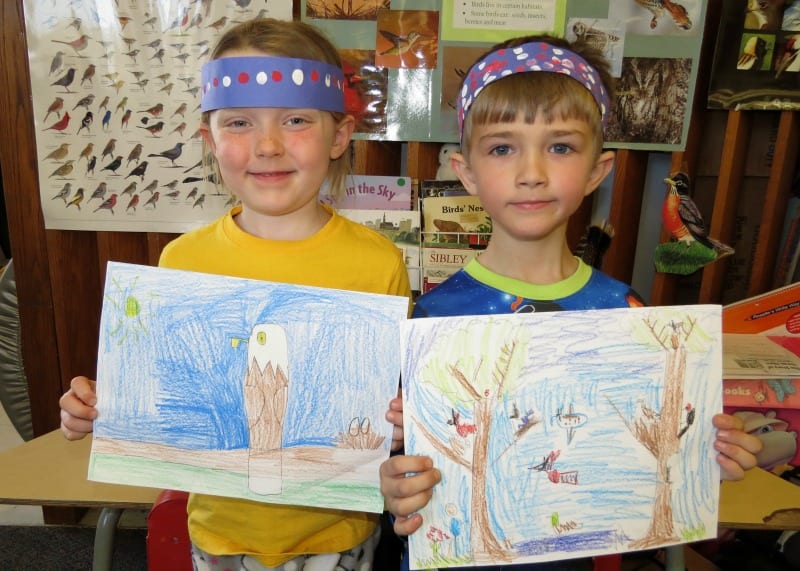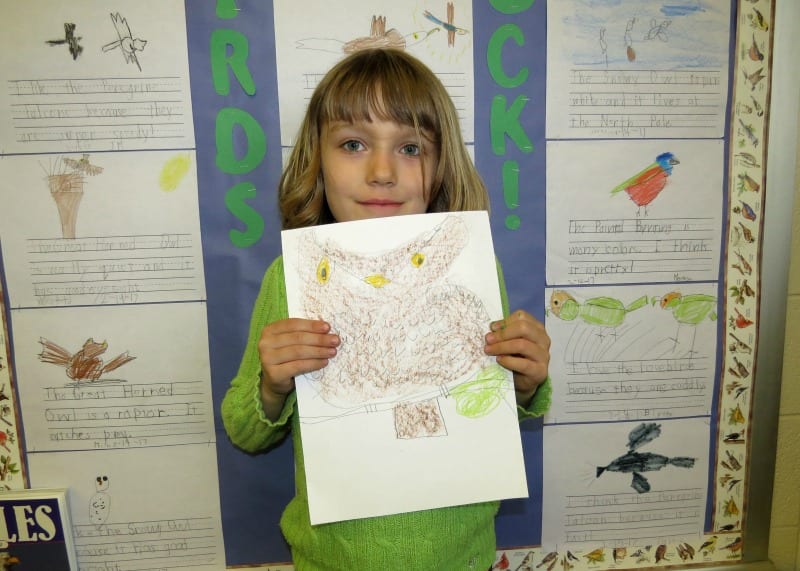Each year, my kindergarten students in Armour, South Dakota, learn to identify hundreds of birds by sight and more than 50 species by their song or call.
It started out simply enough. Bird-watching is my hobby, so about six years ago, I started sharing my love for birds with my students. I’ve always felt like it’s important to get kids outside and away from so many screens, and I consider this doing my part. And guess what? They absolutely love it!

Teach ‘Em Young
Kindergartners are pretty amazing at identifying birds, especially by their songs. I find that younger children are naturally tuned into nature and have a genuine curiosity for it. This became quite apparent once I began teaching about birds. You wouldn’t believe how easily these 5-years-olds learn to identify different species.
With every year that I’ve done this, the kids immediately get hooked. Then we have this common passion to share and build on throughout the year. While teaching about birds is not a Next Gen Science standard, I’ve found that my students’ love of birds is a great way to get them more interested in writing, reading and story problems in math.

Day by Day
So how do I do it? With identification, I use a flash-card approach. We also use a Bird Bingo game in my room that the kids love. Then I introduce one or two bird songs a day. I start with the most common birds our area, and later I add on unique songs that are fun to know like the killdeer, barred owl and northern bobwhite.
I also use my iPod with Stokes Field Guide to Bird Songs and the BirdsEye apps to teach bird songs. I find that matching mnemonics to the bird’s song really helps kids remember it. For example, I tell students that the robin sure looks happy and cheery as he hops around our yard. He says, “Cheerily, cheer-up! Cheerily, cheer-up!”
The black-capped chickadee says his own name, “Chickadee-dee-dee” and he says, “Cheeseburger … cheeseburger.” Wouldn’t it be funny to see a chickadee eating a cheeseburger?
These little quips help kids connect the mnemonic to the bird. And it really only takes about five minutes out of our day. During the winter, I review the migrant birds’ songs. Then when spring migration arrives (a truly great time to be a birder), the kids are ready. All we have to do is take a walk outside, and they can practice their skills firsthand. My students love knowing the “language” of birds, and they take that with them outside of the class too.

Learning a Language
Learning about bird songs is a lot like learning a foreign language. It teaches students to think in a different way by learning to decode and discriminate between different sounds. The best part is that it makes them more aware of nature and which birds are in their area, inspiring them to want to explore.
If you want to try teaching bird songs to your students, I’d suggest starting with these common backyard birds: black-capped chickadee, blue jay, northern cardinal, mourning dove and American robin. Check out the All About Birds website, where you can look up the species, find photos and even play the bird songs right there!
Take a look at this video of my students in action!

